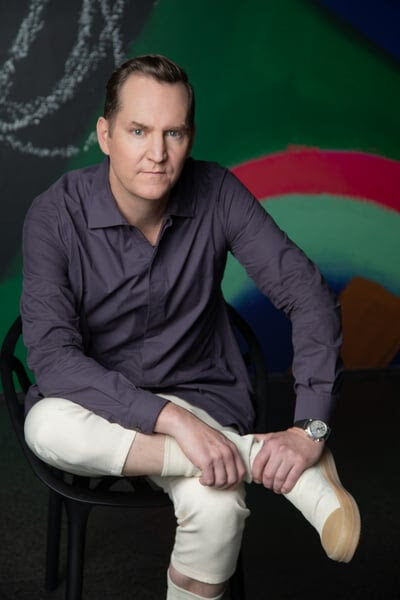A Conversation with Michael Darling, Co-Founder, Museum Exchange
As the valuation partner of Museum Exchange, the first digital art platform for art donations, Appraisal Bureau specializes in the appraisals necessary for philanthropic giving and art collection legacy planning. We've highlighted key components of best practices, filing for a tax deduction, and sat down with Michael Darling, Co-Founder of Museum Exchange, to discuss the tools their platform uniquely offers patrons and museums alike.

Michael Darling, Co-Founder, Museum Exchange. Photo by Maria Ponce.
Can you tell us how Museum Exchange came about and how you came to be involved?
The idea [of the exchange] was a Covid baby really. The co-founders had been exploring ways to improve the functioning of the art world and brought the idea of a model in which donors and their works were matched with museums and suitable collections, through an online platform.
When we first spoke, I’d been working at the Museum of Contemporary Art Chicago for about 10 years and the idea resonated with some of the challenges I’d been coming up against within curatorial roles. There’s a real challenge in deciding which donations to accept - is it the right artist, the right work, the right time for the collection? You have to be conscious of the relationship with the art market, with many keen to legitimize the work (and price) of a work by placing it in an institution. There’s a lot of overconsumption and production and the beauty of this platform is that it metabolizes this.
So, you joined the team in 2021 and you’ve been actively developing the network and catalogue of works available for donation, since. What sort of impact can you see the platform having?
Well, in two years we’ve placed more than 500 pieces, with about a 70% success rate. And what’s exciting is the breadth and range of institutions and not-for-profit organizations we are seeing sign up, including regional collections, university holdings and libraries. It’s really opening up opportunities for works to be placed and for a greater diversity of artists to be represented. When we recently visited the expanded Museum of Contemporary Art San Diego, they had three works on view that came from Museum Exchange-one of which was an early work by African American sculptor, Richard Hunt. It is rewarding to have a role in placing a greater representation of artists in key collections.
On a pragmatic level, it’s also really benefitting museums, which tend to be resource and time-strapped, with a process that can be slow and complex. We centralize the process and can link them up with specialists, like Appraisal Bureau, to help move things forward smoothly. Museums can browse the recent catalogues every three months and pay an annual subscription once getting successful donations, and the fee is based on their operative turnover. Donors pay fees once there’s a successful match.
There’s also a lot of data and information being gathered, which is fascinating - I don’t think anyone was systematically logging the relationship between donors and museums before.
That’s a lot of objects in two years. Is this a sign that the art world is finally embracing the digital, and shaking up some of its oldest processes?
There’s certainly growing confidence throughout the market, both on the donor and museum side, in seeing and making decisions over digital reproductions of works rather than in person. Nevertheless, there’s still a lot of analog in the process (of donating artworks), and digital platforms tend to be used more as a means to jumpstart the process.
So, there’s no risk of undermining the value of a relationship between donor and institution by digitizing the process?
No, it’s still very relationship orientated, the systems may be quicker but, ultimately, the decisions are based on the (pretty slow moving) pace of human relations.
What’s next for Museum Exchange?
We definitely want to grow but we recognize that the main motivator for donors in North America and Canada (where Museum Exchange works from) is tax, so that baseline condition has to exist in the places we work. In terms of expansion then, it’s more with an eye towards the genre and age of the artworks we register, moving beyond Modern and Contemporary.
Charitable Donation Appraisals
There are many nuances in the donation appraisal process - the IRS Form 8283 is an art unto itself. We've highlighted some key points of Charitable Donation appraisals below, and we are always available to answer further questions.
- A Qualified Appraisal and Form 8283 are required for donations over $5,000.
- The Appraisal may be issued no more than 60 days ahead of the transfer of property, or anytime after, up until the donor's tax filing deadline.
- Charitable Donation appraisals rely on Fair Market Value.